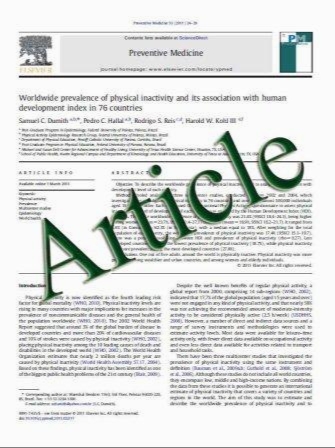Coexpression of atypical chemokine binders (ACBs) in breast cancer predicts better outcomes
- نوع فایل : کتاب
- زبان : انگلیسی
- مؤلف : Xiao-Hua Zeng Zhou-Luo Ou Ke-Da Yu Lan-Yun Feng Wen-Jing Yin Jing Li Zhen-Zhou Shen Zhi-Ming Shao
- چاپ و سال / کشور: 2010
Description
Some evidence suggests that atypical chemokine binders (ACBs) including DARC, D6, and CCX-CKR play an important role in inhibiting invasion and metastasis of cancer cells; however, their expression in breast cancer has not been well characterized. The purpose of this study was to determine the predictive value of ACBs for relapse-free survival and overall survival in breast cancer. The expressions of the three molecules were analyzed immunohistochemically in a total of 558 consecutive breast specimens comprising 12 normal breast tissues, 29 noninvasive (carcinoma in situ), and 517 invasive breast carcinoma and their relationships to clinicopathological features and survival were investigated in invasive breast cancer. Coexpression of ACBs in invasive breast carcinoma (55.9%) was much lower that of noninvasive breast carcinoma (93.1%) and normal breast tissue (100.0%), P = 0.0004, 0.0096, respectively. Their separate stainings in invasive cancer were significantly conversely correlated with lymph node status and tumor stage. In univariate analysis, the three proteins and their coexpression were significantly associated with higher relapse-free survival and overall survival. In multivariate analysis, each of these molecules was favorable for relapsefree survival, but not overall survival. Surprisingly, their coexpression was not only independently prognostic factor for relapse-free survival (RR = 0.182, 95% CI: 0.101– 0.327, P\0.001), but also for overall survival (RR = 0.271, 95% CI: 0.081–0.910, P = 0.035). These findings highlight that the multiple loss of ACBs may occur during the development of tumorigenesis and their coexpression in breast cancer is predictive of favorable outcomes.
Breast Cancer Res Treat (2011) 125:715–727 DOI 10.1007/s10549-010-0875-2 Received: 16 September 2009 / Accepted: 25 March 2010 / Published online: 6 April 2010 Springer Science+Business Media, LLC. 2010


